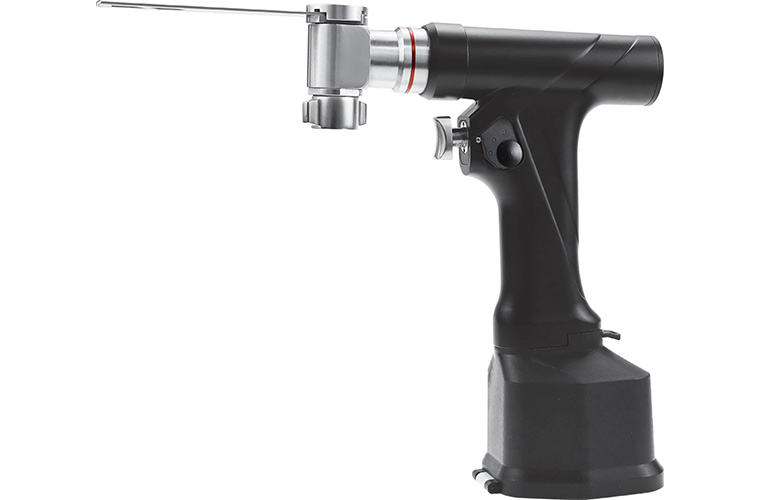The oscillating saw, a ubiquitous and indispensable tool in modern orthopedic surgery, is a marvel of engineering designed for one critical task: cutting bone with exceptional control and minimized collateral damage. Its distinctive back-and-forth or side-to-side oscillating blade motion, typically ranging from 10,000 to 30,000 oscillations per minute over a small arc (often 2-4 degrees), sets it apart fundamentally from high-speed rotary burrs or traditional reciprocating saws. This unique action is the key to its vital function and safety profile.
Function: Precision and Protection
The primary function of the oscillating saw is to perform controlled osteotomies (bone cuts) during a vast array of orthopedic procedures. This includes:
Joint Replacement: Precisely resecting the ends of bones (e.g., femur, tibia in knees; acetabulum, femur in hips) to prepare surfaces for prosthetic implants.
Fracture Repair: Cutting bone fragments for realignment (osteotomy) or removing damaged sections during open reduction and internal fixation (ORIF).
Spinal Surgery: Performing laminectomies (removing part of the vertebral bone) or preparing bone surfaces for fusion.
Amputations: Creating clean, controlled bone cuts.
Bone Harvesting: Shaping grafts taken from sites like the iliac crest.
The oscillating motion is its genius. Unlike a rotating burr that can easily grab and tear soft tissue (nerves, blood vessels, muscles, tendons) or a reciprocating saw requiring significant forward pressure and stroke length, the oscillating blade cuts efficiently through rigid bone but “slips harmlessly over pliable soft tissues” upon contact. This dramatically reduces the risk of iatrogenic injury, making surgery safer, especially in anatomically crowded areas. Furthermore, the saw generates less heat than high-speed burrs, reducing the risk of thermal bone necrosis. Modern oscillating saws feature lightweight, ergonomic handpieces, quick-change blade mechanisms, integrated irrigation ports for cooling and clearing bone debris, and various specialized blade designs (diamond-coated, serrated, narrow profile) for specific tasks.
Origin: A Spark of Innovation
The genesis of the oscillating saw is inextricably linked to the pioneering work of Dr. Homer Stryker, an orthopedic surgeon from Michigan, USA. Frustrated by the limitations and dangers of existing bone-cutting tools like chisels, mallets, and early reciprocating saws in the late 1930s and early 1940s, Stryker envisioned a safer alternative. He recognized the need for a saw that could cut bone effectively but stop before causing catastrophic damage to surrounding structures.
In 1946, Dr. Stryker filed a patent (US Patent 2,489,323) for a “Bone Saw.” His core innovation was a mechanism that converted the rotary motion of an electric motor (often adapted from dental drills or industrial tools) into a rapid, **limited-arc oscillating motion** for the blade. Early models were often pneumatic or connected to large external electric motors via flexible shafts. The Stryker Corporation, founded to manufacture this and other devices he invented, brought the first commercially successful oscillating saw to market. This invention revolutionized bone surgery, providing unprecedented control and safety.
Development: Evolution of Power, Precision, and Safety
Since Stryker’s breakthrough, the oscillating saw has undergone continuous and significant development:
1. Power Source Revolution: Transitioned from cumbersome external motors and pneumatic lines to compact, powerful, self-contained electric motors within the handpiece. The advent of rechargeable lithium-ion batteries in the late 20th and early 21st centuries provided exceptional freedom of movement, eliminating cords and hoses entirely, enhancing sterility and surgeon maneuverability.
2. Ergonomics & Weight Reduction: Handpieces became significantly lighter, better balanced, and more ergonomically contoured, reducing surgeon fatigue during lengthy procedures. Materials evolved from heavy metals to advanced lightweight alloys and polymers.
3. Blade Technology: Saw a massive expansion in specialized blade designs:
* Various tooth patterns and coatings (diamond grit) optimized for different bone densities (cortical vs. cancellous) and cutting actions (coarse resection vs. fine finishing).
* Disposable blades for guaranteed sharpness and sterility.
* Narrower blades for intricate work.
* Improved blade guards and attachments for controlled depth cutting.
4. Enhanced Control & Safety Features: Modern saws incorporate:
* Variable Speed Control: Allows surgeons to adjust cutting speed based on bone density and the specific task.
* Improved Irrigation Systems: More effective delivery of saline to cool the bone, reduce aerosolization of bone dust, and maintain a clear surgical field.
* Dust Extraction: Integrated systems to suction away bone debris and smoke, improving visibility and potentially reducing infection risk.
* Safety Sensors (Emerging): Some systems explore sensors to detect changes in load or tissue type, potentially providing feedback or automatic shutdown.
5. Integration: Oscillating saws are now often integrated components of larger systems, compatible with surgical navigation technologies for computer-assisted, highly precise bone cuts based on pre-operative planning.
Conclusion: An Enduring Legacy of Innovation
From Dr. Stryker’s ingenious solution to a critical surgical problem, the oscillating saw has evolved into a sophisticated, powerful, yet remarkably safe cornerstone of orthopedic instrumentation. Its defining oscillating action, minimizing soft tissue trauma while effectively cutting bone, remains its fundamental advantage. Continuous advancements in power sources, ergonomics, blade technology, and integrated features like irrigation and dust control have solidified its position as the instrument of choice for countless bone-cutting tasks. As materials science, battery technology, and digital integration progress, the oscillating saw will undoubtedly continue to evolve, enabling ever more precise, efficient, and safer orthopedic surgery. Its journey from a surgeon’s sketch to an operating room essential is a testament to the power of innovation in medicine.

